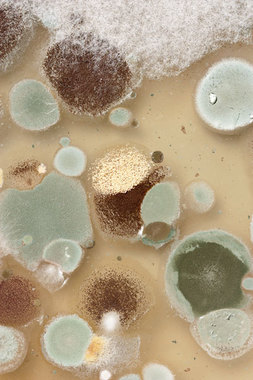 Mold spores aren’t easy to detect. While some molds are visible and even odorous, mold can also grow between walls, under floors, in ceilings, in the basement and up in the attic. It flourishes in water-soaked materials (e.g., paneling, wallboard, carpet, paint, ceiling tiles), and will survive in most any damp location.
Mold spores aren’t easy to detect. While some molds are visible and even odorous, mold can also grow between walls, under floors, in ceilings, in the basement and up in the attic. It flourishes in water-soaked materials (e.g., paneling, wallboard, carpet, paint, ceiling tiles), and will survive in most any damp location.
There are countless disputes over mold between sellers and buyers. Both parties should protect themselves up-front. Put a specific mold disclaimer into the real estate sales contract and encourage in the sales contract that the buyer hire and rely upon the buyer’s own independent mold inspection and testing of the home by a certified mold inspector. Conversely, a buyer should ask the seller about mold and hire an inspector to seek it out.
While it’s not the inspector’s job to look for mold, most home inspectors will mention obvious signs of water damage and the possible presence of mold. Because the inspector will poke around in spaces you might not, he or she may see things you wouldn’t. Don’t be shy. Ask whether the inspector saw signs of mold or potential mold dangers.
In some states, real estate agents have a duty to disclose problems they know exist. Appraisers should also notify you of any obvious sign of a mold problem if the value of the property can be affected.
If your home or property has a water, mold, other environmental problem—or if there’s a reasonable suspicion of a problem—you should remedy the water problem, mold infestation or environmental threat prior to even offering the property for sale.



